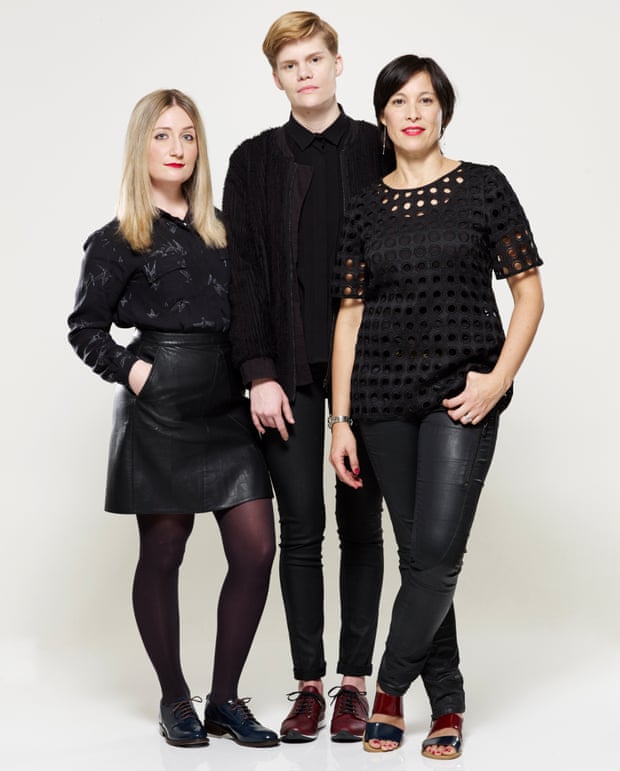After months of trotting around with a broken handbag, I finally found somewhere to mend it. It was a basement shop called Clever with Leather in Brighton. The proprietor examined the piece and announced that “cheap yarn” was the problem. He stitched it beautifully and it’s now back in service.
Among his heavyduty machinery for the punching, stitching and repairing of some of the toughest hides known to mankind I spotted a reddish leather embossed bag, such as a New World postman might have carried. It reminded me of the cavernous, buckled handbag my mum once had. This bag (along with her) was a constant reassuring presence at the school gates for the duration of primary school. From it she was always able to produce tissues, change for the bus and hair pins on the occasion of Wednesday night ballet class, like a 1970s Mary Poppins.
There will be no such jumpers-for-goalposts memories for future generations. The leather handbag – once a coming-of-age gift that held almost as much significance as a wedding dresshas been swept up in fast fashion’s relentless pursuit of the microtrend. In the past 12 months 31% of Britons bought a handbag or manbag, making them our favourite accessory, with UK sales reaching £1.34bn last year.
To fans, leather is the ultimate heritage material in which the patina only becomes more interesting during its long life. That’s the trade off, if you like, for killing an animal (that and the fact that the skin is a byproduct of the meat, like the tallow – cow fat – used in cosmetics and toothpaste). But the leather handbag is no longer a bag for life. To luxury fashion houses, leather goods are the rocket fuel of their huge expansion over the past decade. To high street fashion brands they represent an unrivalled cash cow. To consumers they’re just another disposable fashion product. The fact that they are made from the skin of a beast is incidental.

A rising global middle class means more crazy-ass consumption of bags – and more cows. Presently around 290m cows are killed every year from a global herd approaching 1bn. Projections tell us that in order to keep us in wallets, handbags and shoes, the industry needs to slaughter 430m cows annually by 2025.
Leather is the material of the moment. Its grip extends throughout the wardrobe: from patchwork leggings (Chanel) to Kanye West’s joggers. The way to fashion credibility is apparently to pile on animal skins (the other current favourite is shearling), so you look like an extra from The Revenant.
And you can do this almost without censure in a way that wouldn’t wash if you were swaddled in fur. Despite a defiant surge in fur-wearing, it still remains a mainstream taboo. However luxe the setting, we’re more likely to interrogate the reality of a fur product and think of fluffy animals trapped in cages. When it comes to leather, honestly, who really thinks about cows?
Pop star Leona Lewis does. Since she came to fame via The X-Factor she has continually spoken up for animal rights. She now fronts a new Peta campaign video, Hell for Leather, which, unsurprisingly, is a grim watch. Filmmaker Manfred Karremann, a seasoned campaigner, tracks a pathetic caravan of cattle between India and Bangladesh as they are driven along dusty roads for hours and hours, abused and tortured with every mile. Finally the animals are skinned (in front of each other) in the back streets of Dhaka. The skins are processed in makeshift tanneries with workers, including children, knee deep in toxic chemicals.


Most brands cite Stella McCartney’s eponymous accessories collection as a game-changer. “Here you have a luxury brand where people are prepared to pay £1,500 for a bag, and it’s not made of leather,” marvels Kohli. And anyone who has ever held a Stella McCartney bag and had a good look at one can testify that they’re every bit as alluring in weight and softness as a top-grade leather; that they do appear to be as good as the real thing – better, if you factor in the environmental damage and loss of life they’ve displaced.
Synthetic leather really is on the up. Many patents have been registered for potentially groundbreaking materials. These are worlds away from the plasticised synthetics of a decade ago. Kohli is particularly excited by the biobased PU polyurethane leather that forms the new unstructured Loom collection for Matt & Nat. It’s soft and supple, yet built to last. Sounds a bit like leather, without the mayhem.